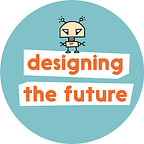The role of Play in the Designathon method.
In his classic book Homo Ludens, the Dutch cultural historian Johan Huizinga (1955) summed up his elaborate definition of play as follows: “Play is a free activity standing quite consciously outside ‘ordinary’ life as being ‘not serious,’ but at the same time absorbing the player intensely and utterly. It is an activity connected with no material interest, and no profit can be gained by it. It proceeds within its own proper boundaries of time and space according to fixed rules and in an orderly manner.”
In a Designathon, children when coming up with ideas and when making their prototypes also tap into this free activity modus. As with play there are some game rules within which the design process can flow, such as how much time is available, what materials the children can work with and the theme is given. Within these game rules or parameters the children are invited to use their imagination to it’s fullest and create a prototype.
Within design research circles lately, there has been criticism of design processes which are overly technology or results driven and no longer allow for play and thus compromise the quality of the design.
As an adjunct: one teacher running the Designathon program with 5 and 6 year old’s, tested having the children play with their prototypes of time travel machines. Both children who had taken part in the Designathon and those who hadn’t played together with the self-made time travel machines, imagining where they would travel to and places they would go. In this way the children made their own toys.
We will incorporate this aspect now going forward especially with the 4 to 8 year olds.
Check out more of our work at www.designathon.nl
All photo’s by Ina Conkic
